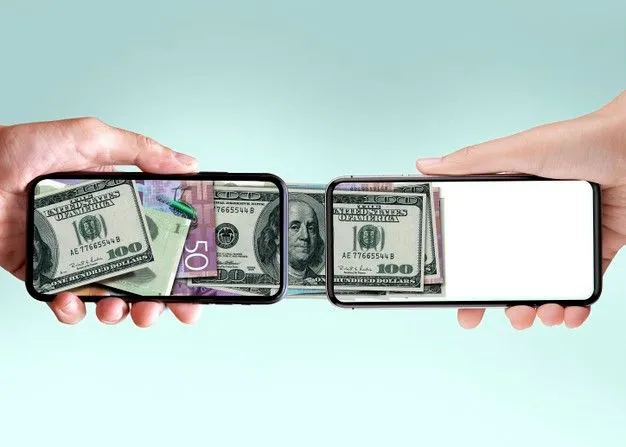In a world moving ever more digital, cryptocurrency is not just a speculative asset, it’s rapidly reshaping how we exchange value. From buying coffee to remitting across borders, cryptocurrency is pushing the payments industry in new directions. In this blog, we’ll explore what’s happening now, where things are headed, and how you, as a consumer or business, can ride the wave effectively.
Introduction to Cryptocurrency and Digital Payments
So what exactly is cryptocurrency? It’s a form of digital money powered by cryptographic techniques and decentralized systems (mainly blockchains). Unlike traditional banking systems, it does not require centralized authorities to validate transactions. Users hold private keys and transact directly, enabling crypto payments and peer-to-peer value exchange.
This shift matters because legacy payment systems often involve multiple intermediaries, fees, and delays. Cryptocurrency offers an alternative: faster, more transparent, and borderless transactions.

Why Cryptocurrency Is Revolutionizing Payments
Faster and Cheaper Transactions with Cryptocurrency
One of the most touted crypto benefits in payments is speed and cost savings. Traditional cross-border transfers can take days and incur high fees. With crypto, especially using networks optimized for payments or stablecoins, transfers can happen within minutes or even seconds, and fees can be a fraction of traditional costs.
Because no banks or middlemen need to approve, cryptocurrency payments cut through bureaucratic delays.
Borderless and Inclusive Financial Access
Millions of people globally still lack access to formal banking. Crypto enables financial inclusion, all you need is an internet connection and a wallet. It allows individuals to receive payments from abroad without needing a bank account. Some regions already see remittances being sent via crypto, avoiding high fees from money transfer services.
This inclusivity is one of the major social impacts of crypto, giving unbanked populations access to global commerce.
Programmable Money Through Smart Contracts
Unlike fiat currency, crypto can be programmed. Smart contracts allow payments to be automatic and conditional. Suppose you agree to pay when a parcel arrives. A smart contract could hold funds in escrow and release them only when proof of delivery is validated. That’s the power of crypto payments, they can be self-executing, reducing the need for trust in third parties.
As more industries adopt blockchain infrastructure, programmable payments may become far more common in logistics, freelancing, subscriptions, and more.
How Businesses Are Embracing Cryptocurrency Payments
Many forward-thinking companies have started accepting cryptocurrency as payment. E-commerce platforms, digital services, content creators, and even brick-and-mortar stores now let customers pay with Bitcoin, Ethereum, or stablecoins.
Businesses often use payment processors that instantly convert crypto to fiat, shielding the company from volatility. This allows merchants to enjoy the benefits of crypto payments without major risk.
Adopting crypto also signals a brand’s innovation. It appeals to tech-savvy audiences, expands international reach, and positions a business ahead of the curve in payment evolution.
Security, Transparency, and Trust in Cryptocurrency Payments
Blockchain as an Immutable Ledger
Every crypto transaction is recorded on a blockchain, a public, tamper-proof ledger. This means less fraud, fewer chargebacks, and more traceability. Because transactions can’t be reversed or edited, merchants get more security in knowing once a payment is confirmed, it’s final.
This transparency also helps regulators and auditors verify compliance or trace suspicious activity.
Reducing Frauds and Disputes
Traditional card payments are vulnerable to chargebacks. With cryptocurrency payments, the irreversible nature reduces fraud. Of course, users still need good security practices (secure wallets, two-factor authentication), but the foundational infrastructure is more resistant to dispute-related losses.
Challenges and Limitations of Cryptocurrency Payments
Volatility Issues
One major barrier is price volatility. If you accept Bitcoin today and its value drops 10% overnight, you lose margin. To counter this, many merchants prefer stablecoins (crypto pegged to fiat) which offer the programmability and speed of crypto without wild swings.
Regulatory Concerns
Different countries have different rules. Some treat cryptocurrency as property, others as currency or security. Emerging regulations may tighten or loosen. Businesses must stay compliant, register, and navigate tax rules in jurisdictions they operate.
User Education and Awareness
Many users are intimidated by wallet addresses, seed phrases, or private keys. For crypto payments to truly scale, user interfaces must improve. Simplified wallets, social recovery, and better onboarding will help adoption.
Scalability and Network Congestion
Popular blockchains sometimes struggle under heavy traffic. High gas fees or slow confirmation times can hurt the user experience. Layer-2 solutions and payment channels (for example, the Lightning Network for Bitcoin) help mitigate these issues.
Top 10 Cryptocurrency to Watch in the Payments Space
To support further reading or in-bound linkage, here’s a list of the top 10 Cryptocurrency projects that are actively shaping payment systems and will likely influence the future:
- Bitcoin (via Lightning Network)
- Ethereum (for programmable finance)
- USD-pegged stablecoins (USDT, USDC)
- Solana
- XRP (for cross-border settlements)
- Stellar (for remittance)
- Cardano
- Avalanche
- Algorand
- Litecoin (as a fast payment coin)
These projects emphasize low fees, fast settlement, security, and cross-chain compatibility.

The Future of Payments with Cryptocurrency
Central Bank Digital Currencies (CBDCs)
Many governments are exploring or piloting central bank digital currencies. These are digital versions of fiat, often built on blockchain-like infrastructure, but centrally controlled. CBDCs aim to combine the best of traditional money with the efficiencies of digital payments.
CBDCs may coexist or integrate with private cryptocurrency systems, creating a hybrid payments landscape.
Integration into Mainstream Finance
Major payment giants and banks are embracing tokenization, blockchain rails, and crypto partnerships. In 2025 and beyond, we’ll see seamless bridges between bank accounts, credit cards, and crypto wallets.
Retailers might let you swipe a card that auto-converts your crypto behind the scenes, making crypto payments invisible to many users.
Everyday Use Cases
- Paying daily for groceries using stablecoins
- Receiving salary partly in crypto
- Using loyalty points as tokens convertible to crypto
- Escrowed rentals or deposit payments via smart contracts
- Microtransactions online via micropayment channels
These futuristic scenarios are already being tested in some markets.
Tips for Using Cryptocurrency Safely
- Start small: Use small amounts until you’re comfortable.
- Use trusted wallets and exchanges: Reputation matters.
- Enable Two-Factor Auth and backup keys: Add layers of security.
- Understand fees and network constraints: Know which chain you use.
- Stay up-to-date with regulations: Crypto rules change often.
These habits reduce risk and help you benefit from crypto payments without major pitfalls.
Frequently Asked Questions (FAQs)
1. How does cryptocurrency make payments faster than banks?
Because crypto transactions run on decentralized networks, there’s no need to wait for banks to clear or settle funds. Payments can go through within minutes or seconds, especially with optimized networks or stablecoins.
2. Is it safe to pay with crypto online?
Generally yes, if you use secure wallets and trusted merchants. The blockchain’s immutability helps prevent fraud, and the public ledger lets you verify transactions. Just be careful with phishing, private keys, and wallet security.
3. Which cryptocurrency is best for everyday transactions?
Stablecoins (like USDC, USDT) are ideal because they maintain a stable value. Coins with fast settlement and low fees (e.g. via Lightning Network or Solana) also work well for daily use.
4. Will crypto replace credit cards and banks?
It’s unlikely to fully replace them in the near term. The future is probably hybrid, banks, cards, and crypto will coexist. Over time, more users and institutions may shift portions of payments to crypto-based rails.
5. How can small businesses start accepting cryptocurrency?
They can use crypto payment processors that auto-convert to fiat, or add plugins to their e-commerce sites. Many tools now let businesses accept cryptocurrency payments with minimal technical setup.
Conclusion: Cryptocurrency’s Role in the Future of Money
The payments landscape is undergoing a transformation, and crypto is at its heart. Faster, cheaper, borderless, programmable, crypto payments offer real advantages over traditional systems. While challenges remain (volatility, regulation, user education), the direction is clear: digital, tokenized, trust-minimized money is here to stay.
If you’re a business, start experimenting with crypto rails. If you’re a consumer, learn and try small transactions. Because the future of payments is not about replacing money, it’s about making it better.





